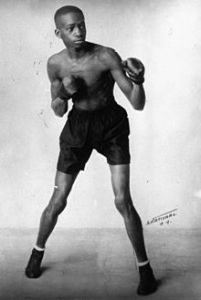By Michael LeCompte
As the NFL season gets under way Seattle’s loyal fan base is still dealing with the pain of being left one yard away from back-to-back championships. Perhaps forever will still be too soon for diehard fans to discuss the game’s tragic ending. Maybe it is a special pain that can only be assuaged through a third consecutive Super Bowl appearance, but the last play of the Super Bowl (the play itself, not the call) offers a valuable, if painful lesson the Seahawks should take to heart.
However many times we watch the replay Super Bowl XLIX never gets any closer than 26 seconds, 3 downs, 1 timeout, and 1 yard away.
All season long, in every inane sports interview we hear athletes speak of execution, of how the game’s just a matter of execution. Well, Seattle’s last-second Super Bowl woes can be chalked up to a lack of execution, both offensively and defensively.
Defensively Seattle failed to execute in the fourth quarter, directly leading to the offense’s need to execute a play from the New England one yard line.
The vaunted “Legion of Boom” surrendered 14 points in the fourth quarter, a feat few outside the Patriot’s locker room would’ve thought possible. Tom Brady cut Seattle to pieces all game long and despite forcing two turnovers the Seahawks couldn’t come up with a stop when they really needed it.
Seattle also failed to execute offensively in the second half of the Super Bowl missing several opportunities to pad the 10 point lead they took into the fourth quarter.
Which brings us to that final, fateful pass. The decision to pass was actually a sound one (New England had its goal line defense in to stop the run so why not throw it?). The problem with that last pass was one of…execution. The failure to correctly execute that slant route is why Super Bowl XLIX will eternally be one yard away from Seattle.
Shocked fans have spent all off-season numbly viewing the disastrous replay innumerable times, unable to look away, constantly wondering: what if? I have viewed it 60 times myself (focusing on one of the three key players: Wilson, Lockette, and Butler each time) and fault can be found with all three.
Some of the fault is Ricardo Lockette’s. He should have ran a crisper route and fought for the ball harder at the point of contact with Butler.
Some of the fault rests on Malcolm Butler. He made an amazing play on the biggest of stages, coming from 5 yards deep in the end zone when the ball leaves Wilson’s hand to make the play at the goal line. Butler’s interception was the kind of play we are so used to seeing Seattle’s secondary make.
We all love Russell Wilson, however, the majority of the blame for the interception lies on his right arm.
Wilson’s problems on the last play are evident as soon as he takes the snap. When Lockette first breaks to the inside he’s open. If Wilson hits him immediately he walks into the end zone. Wilson took a two-step drop before throwing, though, and by then Lockette was less open.
However, the play still could have been a touchdown if Wilson hits his receiver in the chest, sticking the ball between the 8 and 3. Instead he led Lockette way too far…straight into Super Bowl infamy.
If Wilson had just caught the snap and fired with no drop-back (like he did on his touchdown to Mathews right before the end of the first half) Seattle would be opening up a title defense.
Wilson’s fault for the interception goes beyond his pass and back to the play call itself, though, however sound it may be in hindsight. Wilson’s a competitive guy. He desires to be the best and win multiple championships. Which is exactly why, in that situation, with the Super Bowl on the line, he’s got to be better.
At the one yard line he’s got to revert back to the playground and say “I’m the best and we’re winning the Super Bowl.” Then he’s got to either call his own number in the huddle or audible to “Beast Mode” at the line. Defying his coach’s call wouldn’t have mattered if blue and green confetti were falling.
By all accounts Wilson is a good man and a great teammate. He believes he can win and usually does. However, he lacks that hard, fiery edge where he not only wants to win, but refuses to lose. With that edge of iron will he keeps the ball and bulls into the end zone or wins a foot race to the pylon.
Wilson’s been so good and accomplished so much that it’s easy to forget that he’s only 26. He threw a bad pass, it happens. At this stage of his career perhaps he’s not quite comfortable taking control and directly challenging his coaches. He’ll get there.
In July Wilson signed a new $87 million contract (although he’d probably trade all the zeroes on that new paycheck for one more play from the one in the Super Bowl). The key moving forward now is to stay hungry and every indication is that he will, tweeting after the Super Bowl that “at 26 years old I won’t allow 1 play or 1 moment to define my career,” and “I will keep evolving.”
As the pain lingers a new season begins. Forget “I’m In” or “Always Compete,” Seattle’s new mantra should be “ONE YARD AWAY.” They should slap it on posters and signs, little rubber bracelets and T-shirts. They should say it throughout the season. ONE YARD AWAY should always be before their eyes and on their minds.
The painful, but valuable lesson of Super Bowl XLIX should motivate Seattle to not only get back to the promised land of the big game, but to leave no doubt next time. To never be left ONE YARD AWAY again.


